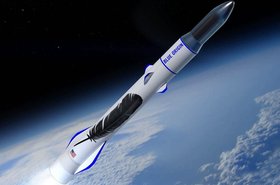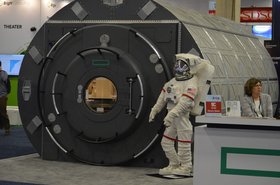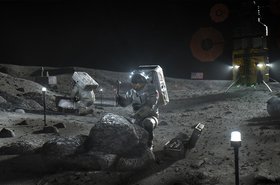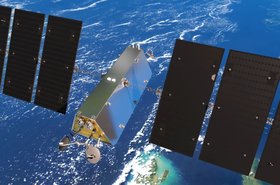Of the 3,000-odd operational satellites currently in orbit, a little over 400 belong to China or Chinese companies. The number of commercial companies in the West launching satellites has skyrocketed in recent years, and SpaceX now operates more satellites than any other company or government.
But refusing to be left behind, China is planning both state and commercial deployments of constellation satellites in huge numbers in the coming years, which could post an increased risk to in-orbit operations if Chinese companies don’t take due care in how they behave.
The new commercial space race
A report by the Secure World Foundation says a 2014 document from the Chinese Government known as “Document 60” (Official English Language Title: Guiding Opinions of the State Council on Innovating the Investment and Financing Mechanisms in Key Areas and Encouraging Social Investment) was the start of China’s modern commercial space sector. And in 2020, satellite Internet was included in the scope of China’s New Infrastructure policy initiative. Space is also part of China’s expansive Belt and Road initiative, which all combined have led to an explosion in the country’s commercial space ambitions.
China is beginning to “get its act together” around commercial use of space, Jonathan McDowell of the Harvard-Smithsonian Center for Astrophysics tells DCD. Whereas in previous years he says China has had many government satellites and some quasi-commercial satellites with strong ties to government, but now there are true commercial Chinese companies in space.
“We have the same phenomenon as the US companies in that they're moving fast and they're innovative and doing new things.”
But as Chinese companies look to follow the likes of SpaceX and OneWeb in deploying large numbers of satellites, he warns their lack of care in operations could potentially damage space for everyone.
China’s commercial space industry blasts off
A number of private space companies including LinkSpace, OneSpace, iSpace, LandSpace, and ExPace, have all launched in recent years. As well developing their own rockets, these companies are launching satellites of all shapes and sizes into Low Earth Orbit (LEO) with the aim of forming their own constellations to rival those of Western companies.
Bao Weimin, member of the National Committee of the Chinese People’s Political Consultative Conference and director of the Science and Technology Committee of the Aerospace Science and Technology Group, recently announced plans to establish a national satellite network company to be responsible for “coordinating the planning and operation of space satellite Internet network construction.”
The China Aerospace Science and Industry Corporation (CASIC), a state-owned enterprise, outlined its plans to preliminarily finish the construction of the Xingyun project, an 80-satellite LEO narrowband Internet of Things constellation, by 2025 in addition to 320 Hongyan communications satellites.
China Telecom’s satellite communications reportedly has plans to launch 10,000 satellites in the next five to ten years under the name ‘China StarNet’. Spacety is also launching a constellation of imagery satellites and has launched at least 20 so far. Another company called GW has filed for spectrum allocation from the International Telecommunication Union for two broadband constellations called GW-A59 and GW-2 that would include almost 13,000 satellites.
A report from IDA into China’s commercial space industry found others including Zhuhai Orbita, GalaxySpace, MinoSpace, LaserFleet, Head Aerospace and numerous others are also developing constellations from which, like US counterparts, these companies aim to provide satellite broadband, 5G, IoT, and various data services. Though many are in the early stages of development, most plan to launch the first of what could be hundreds or even thousands of satellites within the next few years.
While most companies can’t boast the same level of funding as US space companies – VC funding for Chinese space companies was up to $516 million in 2018 compared to the $2.2 billion US companies raised – they are bringing in investment; earlier this year Beijing Commsat received more than $4.5 billion in funding from the China Internet Investment fund, with more than $10 billion in additional funding promised in the future.
Xie Tao, founder of Beijing Commsat Technology Development Co., Ltd, told China Money Network he expects the country to launch 30,000 to 40,000 Satellites in the future, compared to 40,000 to 60,000 launched by the US.
“Space in the orbit is allocated on a first-come, first-served basis and the onus will be on these latecomers to ensure their satellites will not collide with existing ones,” Commsat’s Xie previously said. “The low-Earth orbit is becoming increasingly crowded and the space land grab is on.”
China isn’t up to speed in orbital norms
While the UN tightly controls GEO orbits, offering countries licenses for a set number of slots in the closely-packed and highly valuable planes, there is no such limit at lower orbits. The number of satellites that companies can launch at LEO is limited only by what local regulators will permit, despite the machines circling the entire planet in around 90 minutes.
And space is becoming increasingly crowded. The number of satellites being launched annually is beginning to reach the thousands, leftovers parts from previous launches and satellites can mount up if not properly disposed of, and debris from previous in-orbit incidents means LEO is full of thousands of pieces of potentially satellite-destroying junk and debris.
Around 28,200 pieces of space junk and debris are currently being tracked in orbit but ESA estimates there could be up to hundreds of thousands of potentially harmful pieces in orbit. At its most extreme, Kessler syndrome predicts a scenario where the space around Earth is so full of satellites and debris that it becomes unmanageable and collisions begin to cascade, causing a chain reaction of collisions which render many orbits out of use for generations.
China has as much right to operate satellites as Western companies, but the current lack of adherence to ‘space norms’ could increase risks further. McDowell warns the ‘explosion’ of Chinese activity could have a massive impact on the usability of space.
“Chinese adherence to things like space debris norms and registration norms is, I would say, about 10 years behind everybody else, if not more” he says. “In UN registration of satellites, they're being very incomplete. They're not registering a lot of their CubeSats and things like that. They're not really being as careful, and they're not as transparent in what's going on.”
Chinese commercial satellites are subject the same risks as Western ones in space; extreme temperatures, crowded operating environment, and new companies seeing large numbers of failures as they go through rapid development. But a lack of proper registration can create more risk of collisions, which can have catastrophic effects, especially with larger satellites at higher orbits.
In 2009, the Iridium 33 and the defunct Russian military Kosmos-2251 satellites collided at a speed of 11,700 m/s (26,000 mph; 42,000 km/h) and an altitude of 789 kilometers (490 mi). Kosmos-2251 had gone out of service in 1995, had no propulsion and no one controlling it. The resulting collision created at least 2,000 pieces of large debris, forcing the International Space Station to change orbit to avoid pieces. More than one thousand pieces still remain in orbit.
This month, satellites from OneWeb and SpaceX came within 190 feet of each other - after both companies coordinated to avoid a devastating collision.
No international rules of satellites, so it’s up to the company and local regulators
There are no international laws regarding satellite disposal, and ESA estimates non-compliance around disposal could be as high as 60 percent of launches. Poor adherence to End of Life protocols can also add to the issue of space junk. In LEO, best practice is to have your satellite descend to an orbit where it will naturally burn up in the atmosphere; some even have propulsion systems that can get them there faster, some even have small parachutes which can slow their speed and de-orbit them quicker. At GEO, it’s more common to have satellites fly into a higher orbit out of harm's way.
Planet, for example, has publicly made commitments to keep space as clear as possible and adhere to EoL best practices, including for its recently retired RapidEye constellation. But the fast arrival of many new commercial and nation-state players into orbit means adherence to norms are still spotty.
As an example, McDowell says it took nearly China far longer than the US to start adhering the norm that at the end of a GEO satellite’s mission that it is ascended to the safe ‘graveyard’ orbit around 300 kilometers above GEO and safely out of the way of operational satellites and keeping the important orbits clear of debris.
“It took them about 20 years after the US started doing it for them to do that to the same degree. I worry that then we're going to see the Chinese mega constellation they've started talking about prototyping, is maybe not going to be as reliable or as careful as the ones that the FCC is licensing,” says McDowell.
“It's going to be in the same orbits, more or less, separated in altitude by a few kilometers. There's no Chinese part of space and the US part of space, everyone's all mixed in together and that makes it dangerous.”
The realities of business may also cause problems. IDA’s report also warned that since most Chinese satellite communications companies are late to the game compared to their Western counterparts, they will likely have to work in less desirable bands of the spectrum, which is likely to raise the costs of their operations and leave only a “small number of companies that succeed.” Satellites of defunct companies may change hands and continue to operate, but those that don’t could become risks for nearby satellites if there is no one at the helm.
McDowell is hopeful that Chinese players will catch up quickly as the commercial satellite sector ramps up and the internal regulators in the country begin to establish themselves.
“They were late to the space game, and they've been catching up really fast,” he says. “And maybe they didn't have their internal regulatory people set up and now they are and it will be fine.”
“I have optimism that they will eventually join those to learn from the US but I don't have confidence that they'll do it right off the bat.”










